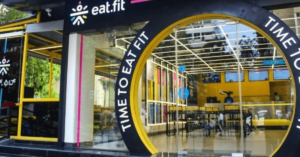SaaS-based players transformed the game by supporting eCommerce players and D2C brands in managing their end-to-end logistics and shipping requirements
Pulse of the logistics industry was captured working in collaboration with courier companies to understand their reach and delivery TAT
Data points were leveraged to allocate carriers to inaccessible zones, which helped businesses reduce cancellations and meet delivery timelines

The Indian ecommerce market has been one of the very few industries that had witnessed positive growth since the beginning of 2020. With a series of strict lockdowns imposed across the country, many small and medium businesses moved to sell online. The country observed D2C brands emerging and witnessing sharp growth. Hyperlocal deliveries gained traction with even small shop owners using multiple delivery options to service their customers. And, for all such brands, revolutionary SaaS-based logistics service providers emerged as a promising bet. They became their partner in growth by supporting them in managing their end-to-end logistics and shipping requirements.
Though the logistics & supply chain industry has been growing since the beginning of last year, the initial phase of 2020 was somewhat rough, in general. Overnight the country came to a halt. The unprecedented migration of manpower during the first wave shook the very core of supply chains in the country.
Meanwhile, the second wave of the pandemic exposed some new limitations in logistics and supply chain management. From the reduction in cargo capacity to a major shift in the purchasing patterns of the customers to e-commerce, businesses had to face multiple challenges. Moreover, the costs in the logistics and supply chain sphere amplified due to rise in fuel & commodity prices, low storage/ transportation capacity, high cost of labour from manufacturers and higher charges in transfer and management of products.
How Did The Logistics & Supply Chain Industry Brave The Challenges During The Second Wave?
Everything was new, from the zones to containment areas to what comprised essential and non-essential goods. The logistics and supply chain service providers and aggregators had to internalise the new rules, terminologies, safety protocols and movement guidelines. By closely working with courier companies to understand their reach and delivery TAT, the pulse of logistics across the country was captured within a matter of days. Logistics and supply chain service providers used this information to help the eCommerce players and D2C brands manage their logistics.
For most new-age players in the supply chain industry, the initial phase of the first wave came as a blessing in disguise as it offered a much-needed insight on the carrier reachability across certain pin codes. Their tech platform considered all the data points to act as a layer on top of a network of carriers. Carriers were allocated accordingly to inaccessible zones, which helped businesses process high-volume deliveries faster than ever, thereby reducing cancellations and meeting delivery timelines. Meanwhile, the tech support enabled D2C brands, marketplace sellers and SMEs to meet their goals of servicing their customers and bounce back even during the lockdown phases.
That said, it is no more a secret that the tech-forward logistics and supply chain industry is going to play a pivotal role in realising the new normal and contribute to the brave new ‘post-COVID’ world. However, in the foreseeable future, the players would need to focus on providing a wide suite of shipping solutions to the country’s D2C brands, eCommerce sellers and even large enterprises, by which they can achieve a high level of efficiency in their supply chain management and thereby positively impact their top and bottom line.









![Read more about the article [Startup Bharat] This retail-tech startup is revamping kiranas in tier III cities in Andhra Pradesh](https://blog.digitalsevaa.com/wp-content/uploads/2022/05/ImageBranding-Amisha38-1652968812695-300x150.png)
